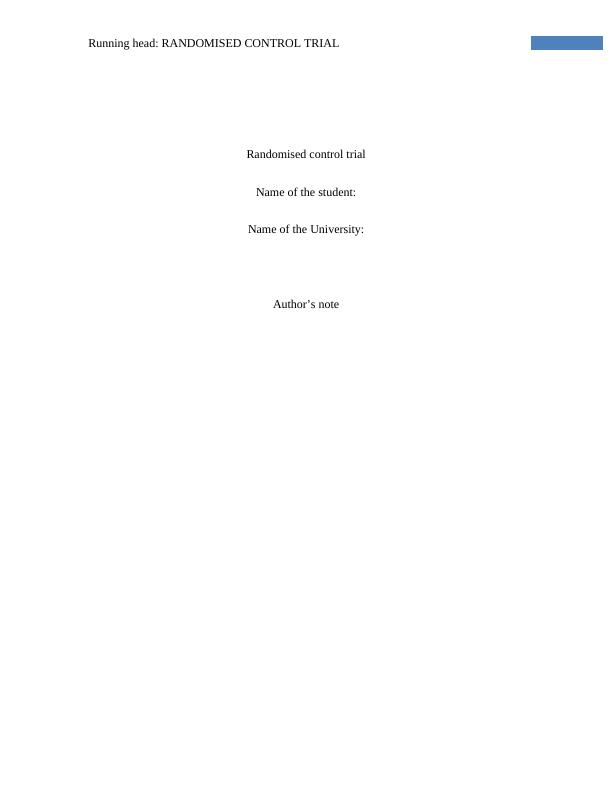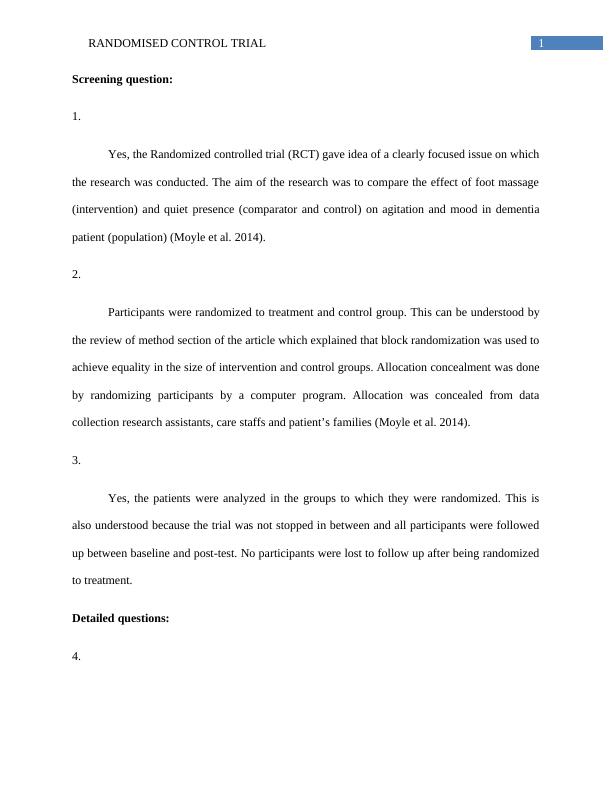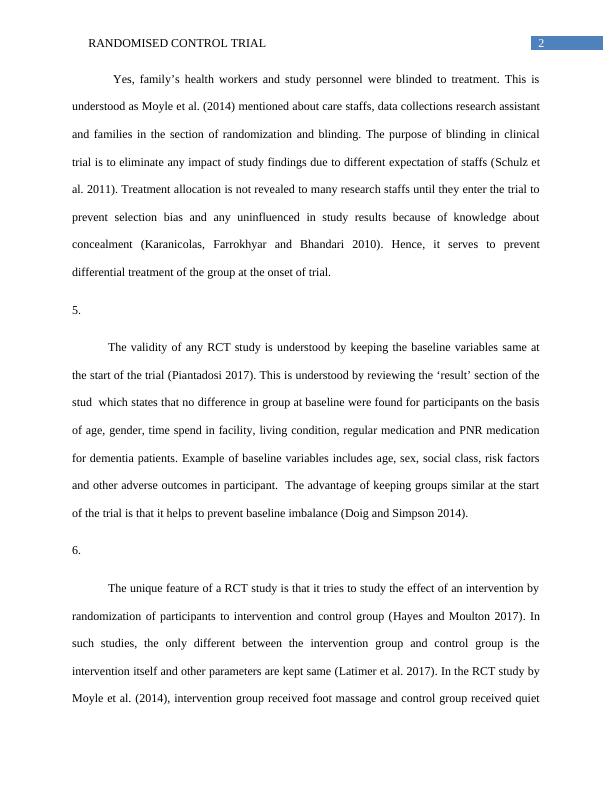Report on Randomised Control Trial
9 Pages2361 Words64 Views
Added on 2020-04-15
Report on Randomised Control Trial
Added on 2020-04-15
ShareRelated Documents
End of preview
Want to access all the pages? Upload your documents or become a member.
Article on Effectiveness of Preoperative Immunonutrition
|4
|691
|137
Critical Appraisal of Ohura et al. (2011) Randomized Controlled Trial
|9
|2204
|455
Glucose Analytical Comparability Evaluation
|9
|2272
|24
Critical Analysis of RCT Study
|15
|4251
|40
Quantitative Research on Non-Therapeutic Intervention for Fibromyalgia Patients
|13
|4544
|47
Critical appraisal of an article using the CASP tool
|9
|2490
|277



